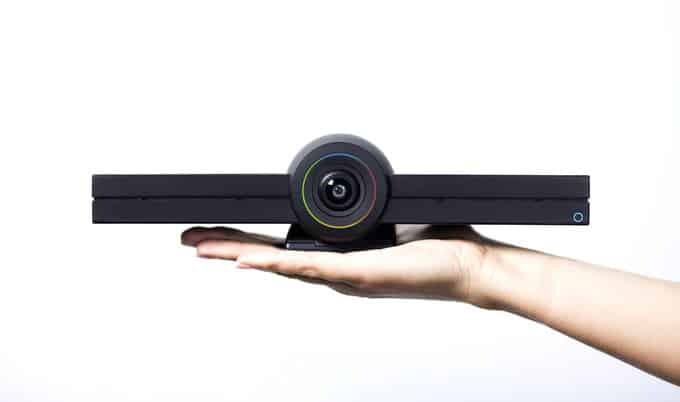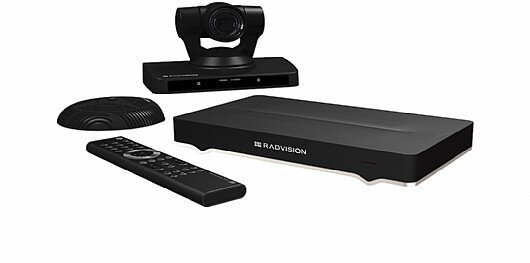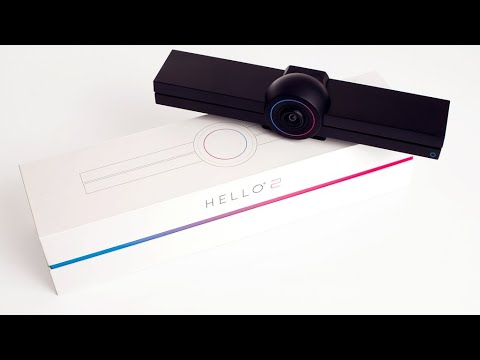It is about time for video room systems to adopt WebRTC native approaches.

When I first started this blog, I had no clue where it was going to take me. I wanted it to be about developers. To be interesting. I also decided early on to write three posts about WebRTC:
- What is WebRTC
- How WebRTC is going to affect signaling
- What a room system needs to look like in a WebRTC world
Somehow, I ended up covering a lot more ground since then when it comes to WebRTC…
Signaling came a long way since then. Most of you might not even know what H.323 is. SIP is still important, but a lot less these days. Proprietary signaling mechanisms are thriving – and that’s a good thing.
The thing that never did come to play was WebRTC in video room systems. When you went to purchase a room system, you were tethered to the vendor providing you that system, along with the signaling standards it supported. It is still painfully hard to connect room systems of different vendors. And if you factor in the need to integrate it with other services the enterprise uses, it becomes even worse.
What’s a Video Room System Anyway?
This is called a codec for some arcane reason.
A video room system is a device split into 4 parts in most cases:

- High end camera
- Speaker pod
- Remote control
- The brains (that’s the “codec”)
The TV display itself is almost never included in the package (unless you’re starting to look at the new touch boards).
Speaker pods are sometimes integrated into the camera itself. This is suitable for smaller meeting rooms, also known as huddle rooms.
Remote controls were always nasty. A meeting room will have at least 3 of those: one for the TV, one for the projector in the room and one for the video room system. The one for the video room system is somehow the most complex to use. The projector one is gone along with the projector, now that we all just use the TV(s) instead.
In many cases, an external touch panel will be used to control the gizmos in the room, including lighting and other moving parts. And today, in many cases, these room systems are capable of tethering themselves to apps on smartphones for the control, killing the need for the remot control altogether.
The brains? They are sometimes just wrapped into the same box as the camera, just to save on cabling and space.
It started off as an all customized solution. The hardware, the software – it was all proprietary and specific. DSPs made up the “brains”. High end cameras were purchased and branded from Sony. The software was written in embedded operating systems like VxWorks (anyone remembers that painful thing?)
We’ve standardized some of it as time went by. Cameras have become somewhat of a commodity, now that we’re all carrying powerful ones in our pockets. Operating systems for these devices have moved on to be Linux based. DSPs are less common now that we can just use SoC (system on chip, packing the host operating system and the DSPs nicely together) or just rely on Intel chips.
What never happened is the standardization and commoditization of the software in the brains – the actual video software running the room system.
Let’s Talk UCaaS
That may finally be changing. As we head to the cloud, UCaaS (unified communication as a service) vendors are beefing up their offerings. Adding contact centers, APIs, video support and other trinkets to their battle chest.
In the past few months, we’ve seen:
- Vonage acquiring TokBox, gaining ownership of a video technology
- 8×8 just acquired Jitsi from Atlassian
- RingCentral must be doing something along these lines as well – and if not, it is high time they start thinking about it. Using Zoom as a partner makes no sense anymore, especially considering Zoom’s entrance into the voice only space
Each of these vendors is using today a third party for its video calling services but can now potentially displace them with its own technology stack.
While that solves their video software issues, how are they going to handle video room systems?
Lets see what the other notable players have done in that domain:
- Microsoft, which has Teams and Skype, has been partnering with hardware vendors for years, getting these vendors to build their stack to the Microsoft spec in order to integrate with it and become official partners
- Cisco has its own hardware products, giving it the full spectrum of the solution
- Google has its Chromebox
Vonage, 8×8 and RingCentral aren’t hardware vendors. They aren’t going to start designing and manufacturing video room systems. When it comes to physical phones, they partner with multiple device manufacturers. This is hard work when it comes to integration and to adding more devices into the fold and trying to introduce new features. The video room systems types of devices are limited today. Polycom offer partner-friendly solutions. Logitech sells components/peripherals (mainly the cameras). Lifesize has its own cloud service. And again, integrating these video room systems with other features and capabilities is sometimes close to impossible.
On the other end of the spectrum, there’s the customer. Banking on one UCaaS supplier is fine, but if you invest in hardware devices, will they be usable when switching to another vendor? What if you want more than a single service to run on a room system? Let’s say you want to record and transcribe physical meetings taking place in a room – when not on a call. Is the UCaaS vendor or the video room system vendor need to add such a capability? Can you add it on your own by partnering with a totally different vendor while still using the same hardware?
Now, here’s the thing:
- TokBox uses proprietary signaling
- Jitsi uses XMPP for its signaling
- Microsoft’s own use of the SIP standard is notoriously non-standard to some extent
- Cisco puts its own “secret sauce” in all of its devices
- And Google uses Meet, which runs… proprietary signaling
How can you partner with video room system vendors (even if there are ones) in a way that is relatively easy?
You Redefine What a Room System is
The one thing that is now changing is the software that is built into a video room system.
That is done by first changing the operating system. Instead of Linux – Android.
And Android means we can start thinking of a video room system as a device that can run multiple different applications by different vendors for different tasks.
Need to run Zoom? Why not?
Wanna switch to GoToMeeting? Fine.
How about attending a WebEx call? Sure.
Just install any of these apps – or better yet – try joining them from an integrated Chrome browser if they happen to support WebRTC.
But what if you want to show internal news for your company on that display connected to the video meeting room? Or give the ability to record and transcribe local meetings? Or connect to other internal or external services with ease? Not a problem. Just install that app on Android and you’re ready to go.
The difference here is that there is no integration work required from the video room system vendor. This is something the UCaaS vendor can do – or god forbid – the actual enterprise who is using the video room system.
I’ve been waiting for this level of commoditization and flexibility to take place.
Enter HELLO 2
One of the vendors in this space, is Solaborate. I’ve interviewed Labinot years ago on this blog. That was about his enterprise social network service. Since then, he’s added a hardware device called HELLO which successfully launched on Kickstarter; and he is now running a Kickstarter campaign for HELLO 2.

The HELLO 2 is an “all in one” video room system capable of what I was looking for to happen:
- The brains is built into the camera
- It is based on Qualcomm chipset, giving it most of what a high end phone can do (which is… a lot)
- It has a 4K camera with zoom capabilities
- Built-in mic array
- And … AI capabilities (why not?)
The best though? It runs on Android, so you can either use the HELLO 2 / Solaborate applications or any other application you fancy using (that said, the applications may not be as polished on the big screen as they are on a phone or a tablet and that requires a bit of reworking on their end).
This gives some real flexibility:
- UCaaS vendors can now offer a hardware video room system running their own software applications, not needing to rely on the vendor doing the work and the integration. This gives full brandability along with the ability to integrate intimately with all of UCaaS vendor’s services and capabilities
- End customers can install and add the other services and apps that they use within their enterprise, without needing to beg to the UCaaS vendor to support and integrate with them
One more thing – you can run Chrome directly on the HELLO 2, and it will successfully operate any WebRTC based web page with it.
The Future
This is the model of the future when it comes to video room systems. Generic types of devices, packing all the needed hardware, letting other vendors and customers handle the software components.
And today, there’s no easier way to do that than using Android as the baseline operating system. Having a Chrome browser inside the device is just an added bonus to let you join with guest access to those pesky calls your suppliers and customers schedule on their own services.

Love to demo the product. Do they support remote access?
Mark,
Not sure what you mean by remote access. The HELLO 2 has its own app (Solaborate) along with the ability to run virtually any other video app on it as well. If the video app you use supports guest access, then this one does.
If by remote access you mean the ability to control it remotely, then I know it comes with an SDK, which I am certain can be used to handle such tasks.
Very good article and thanks for educating us.
Was curious to know about your recommendations on the kickstarter campaign and the devices. You briefly addressed that in the article and I can review more on the campaign page, but your review and feedback would be more helpful.
Thanks.
Satish, I haven’t given a recommendation on the Kickstarter specifically – just mentioned that it is there.
The HELLO 2 camera works nicely from my own few tests with it (played with it for a couple of hours, doing video calls with multiple services).
We had similar concern about hardware manufacturers who make IP Cameras and video capture cards with on-board compression – we asked many of them – are they going to add support for Opus audio which is needed by WebRTC? And the answer is – No! They don’t care about WebRTC for now. Matrox, Teradek, Euresys – all said – no, they don’t want to support Opus audio. The only exception is Axis IP Cameras – they recently added Opus support. Dahua conferencing systems also have Opus support.
Steve,
I am guessing this is just a matter of time. At some point, understanding will sink in and they’ll need to support it. But true – today, it is mostly something you need to bridge from into the WebRTC domain.
Small nit: Jitsi uses standard signaling, it’s XMPP Jingle.
Noted and fixed from proprietary to XMPP – thanks for that!
the colibri bits are nonstandard so proprietary is still correct.
Grumble, grumble, grumble….four beam-forming microphones…grumble, grumble. Same as the first generation device. Same as every similar device from any brand you care to mention.
The audio experience has not substantially improved in years. The audio experience defines the experience of the meeting. Bad video is bothersome, but bad audio stops the meeting dead.
Browser-based audio handling has not helped. Chrome audio performance is not exactly stellar, most especially where doubletalk is concerned. Witness, we’re just now starting to see AEC3 rolled out in Chrome.
Not sure I share your view.
Zoom succeeded without having a room system to begin with.
While all the industry cared about was how good their audio is, but forgot how damn hard it is to actually join a meeting, Zoom just ignored it and created something that is super simple to start using.
To me, an Android based device, done right, acting as a video room system is way more powerful than any existing room system device which no one really knows how to operate in the enterprise…
Is the Hello 2 actually GMS certififed and legally allowed to have the Playstore or would they potentially be prosecuted out of existance by Google ?
https://www.androidpolice.com/2018/03/27/google-confirms-blocking-google-apps-uncertified-android-devices-heres-deal/
https://www.android.com/certified/
Rob,
You will need to ask them that.
In the case of B2B, it might not be a limiting factor, simply because you can sideload apps via other stores, or direct APK files – or have Solaborate create their own marketplace of business apps for the meeting room. It isn’t as extensive as having the Google Play store, but not sure it matters that much.
Play Store is a minor problem when Google Services are not available. Quite a few apps rely on GMS for running, even if one sideloads them.
This looks like a bit like the Dolby Conference Phone (https://www.dolby.com/us/en/professional/products/dolby-conference-phone.html) that is based on Chrominum and can be integrated by UCaaS provider by developing app on it.
To some extent it is.
Tsahi,
thanks for great overview and your insights.
How do you see Apple in this context? I guess they need to come up with some version of AppleTV equipped with camera in order FaceTime would become relevant in room based communication? HomePod could serve as a superior speakerphone 🙂 Just not sure if Apple consider this use case big enough for consumer market.
On the other hand I have tried using iPhone mirrored to the big screen through the AppleTV and it works quite well, you just need to position you iPhone appropriately.
Gytis,
Somehow, I don’t see Apple interested enough in this market to enable it in the foreseeable future.